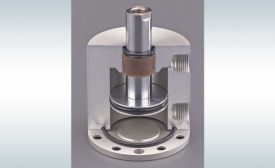Motion Control
Both fixed and flexible technologies offer distinct advantages, but only if manufacturers optimize important operational parameters.
Read More
Plastic Machine Components Can Boost System Speed
By upgrading gears, cam followers, track rollers and other components, engineers can improve the speed of a machine by 15 to 20 percent or more.
June 7, 2017
Force and Torque Sensors
Advanced technologies increase the accuracy of force and torque sensors used in product assembly and end-of-line testing.
June 7, 2017
Low-Profile Conveyors Move Small Parts for Assembly
Low-profile belt conveyors and pallet-transfer conveyors are popular—and precise—methods of moving small parts for assembly.
April 10, 2017
Compact Pneumatic Cylinders Can Play Big Roles in Automation
Engineers have a wealth of options when choosing compact, short-stroke cylinders for their motion control applications.
February 3, 2017
High-tech motion control aids production of protective packaging
Ohio manufacturer relies on sophisticated motion control technology to produce high-quality protective packaging materials.
February 2, 2017
Never miss the latest news and trends driving the manufacturing industry
Stay in the know on the latest assembly trends.
JOIN TODAY!Copyright ©2024. All Rights Reserved BNP Media.
Design, CMS, Hosting & Web Development :: ePublishing











